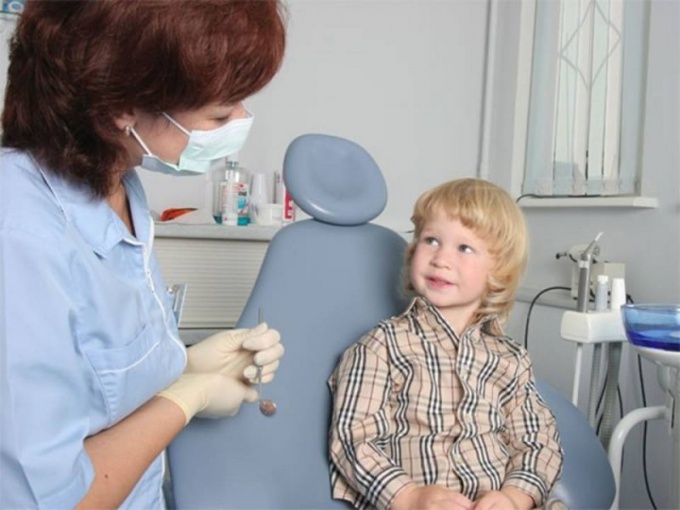Children's teeth are constantly changing. Are called milk teeth because they grow due to the calcium in maternal milk. Until the child reaches three years of age and the growth of the milk teeth. But then they have to give way to permanent teeth. Not yet reached the age of six, the child begins to lose baby teeth.
The number of milk teeth is less than permanent. Three years kid usually has all 20 primary teeth. Not to worry, that they grow asymmetrically and not exactly. This is because their sizes are much less permanent, but when you start to change milk teeth, then everything falls into place.
Baby teeth have short roots, which become weak and disintegrate to six years of a child's life. Help them to leave the gums permanent teeth. Their growth pushes out the baby teeth, which become loose and fall out.
The process of loss of tooth can be quite quick and random, and it can last for a week. Then the child is uncomfortable and hard to chew food. If it causes a lot of anxiety, it is best to consult the dentist who quickly and gently he vomits.
Caring mother should know how much it vary teeth to prepare herself and the child to this process. The norm is 4-8 years, depending on how late or early I had the first teeth.
To children's milk teeth are lateral incisors, Central molars and premolars, milk canines and the first molars. Do not change due to the fact that they are permanent second molars that begin to erupt with 4 years.
If you pay attention to how appeared the first teeth, it is possible to notice the similarity of their operation. Usually the first change tools, then the root, and the last thing fangs. A complete change and the growth of teeth is completed only by the age of fourteen years. Wisdom teeth can come out only 25 years old.
In the period when milk teeth are changed at the root, to the child need to be careful and cautious. This time is important both for children and for parents. New teeth have a sharp edge. Color of permanent teeth may be a shade darker — this is normal.
The child's diet should have adequate calcium and phosphorus, and vitamins A, E, D will help with their absorption.
If a malocclusion transmitted by inheritance, as the change and growth of teeth required periodic visits to the dentist.
The number of milk teeth is less than permanent. Three years kid usually has all 20 primary teeth. Not to worry, that they grow asymmetrically and not exactly. This is because their sizes are much less permanent, but when you start to change milk teeth, then everything falls into place.
Why change teeth
Baby teeth have short roots, which become weak and disintegrate to six years of a child's life. Help them to leave the gums permanent teeth. Their growth pushes out the baby teeth, which become loose and fall out.
The process of loss of tooth can be quite quick and random, and it can last for a week. Then the child is uncomfortable and hard to chew food. If it causes a lot of anxiety, it is best to consult the dentist who quickly and gently he vomits.
Caring mother should know how much it vary teeth to prepare herself and the child to this process. The norm is 4-8 years, depending on how late or early I had the first teeth.
The procedure for the change of teeth
To children's milk teeth are lateral incisors, Central molars and premolars, milk canines and the first molars. Do not change due to the fact that they are permanent second molars that begin to erupt with 4 years.
If you pay attention to how appeared the first teeth, it is possible to notice the similarity of their operation. Usually the first change tools, then the root, and the last thing fangs. A complete change and the growth of teeth is completed only by the age of fourteen years. Wisdom teeth can come out only 25 years old.
What to do when the teeth are
In the period when milk teeth are changed at the root, to the child need to be careful and cautious. This time is important both for children and for parents. New teeth have a sharp edge. Color of permanent teeth may be a shade darker — this is normal.
The child's diet should have adequate calcium and phosphorus, and vitamins A, E, D will help with their absorption.
If a malocclusion transmitted by inheritance, as the change and growth of teeth required periodic visits to the dentist.
